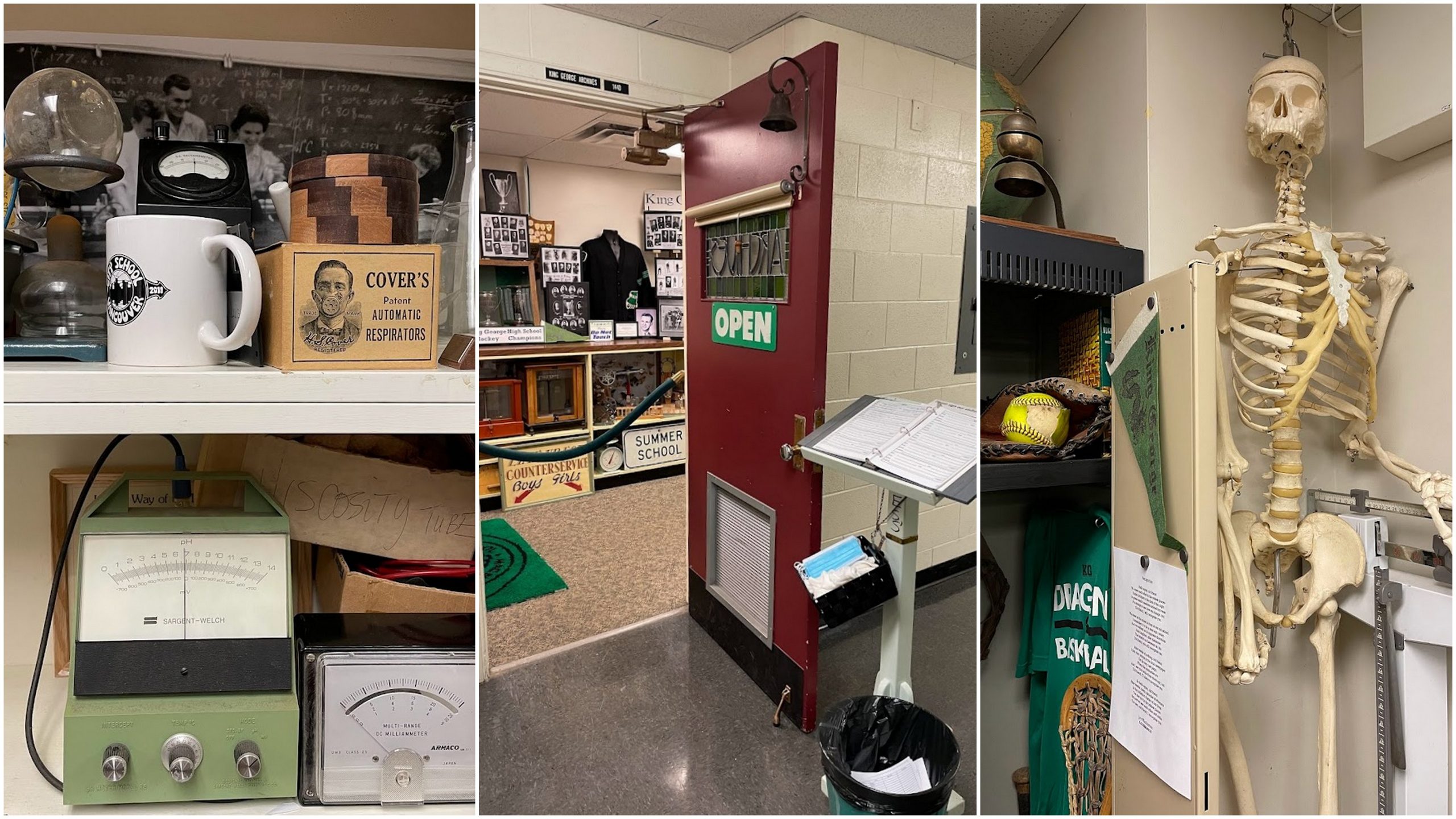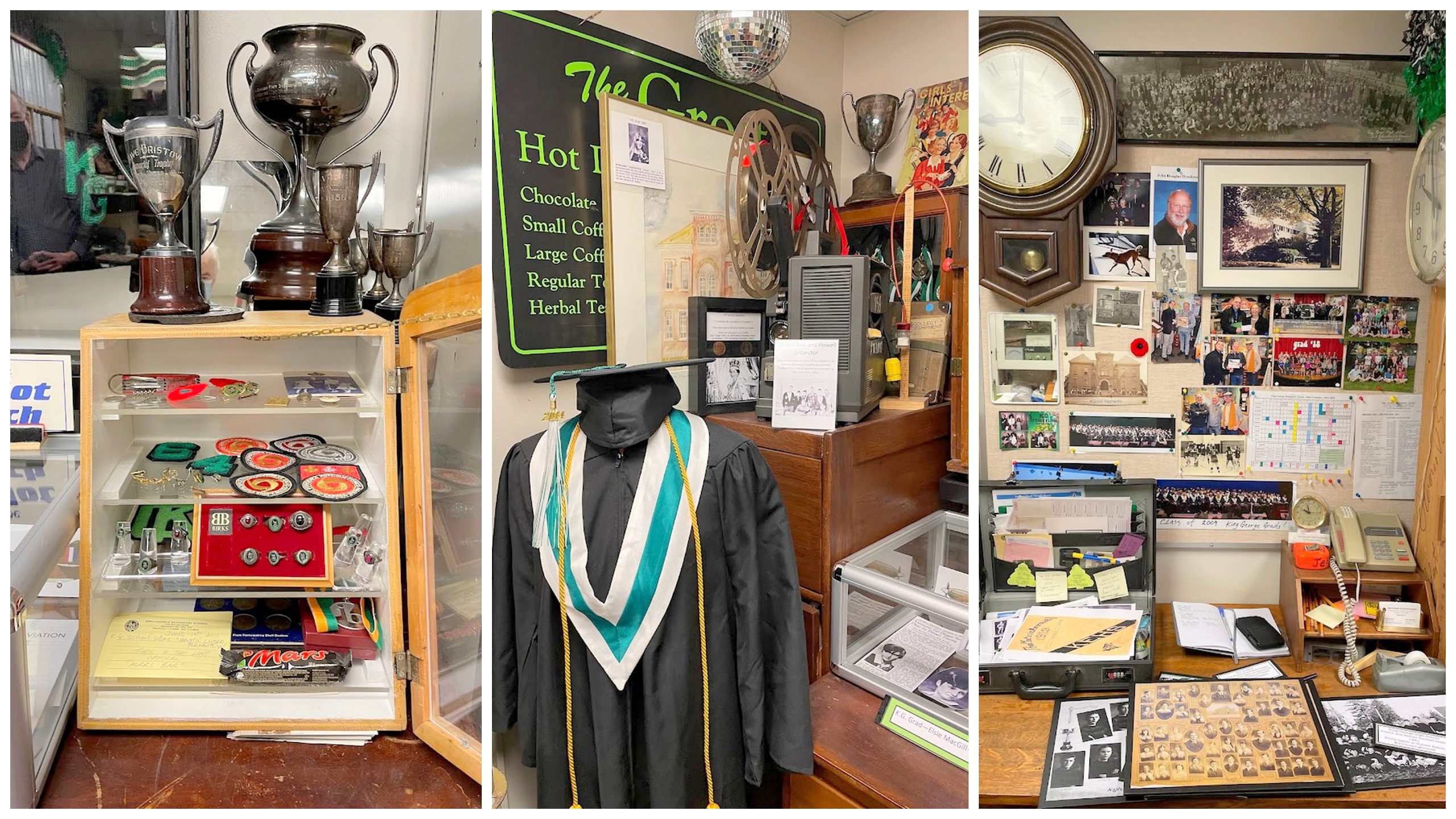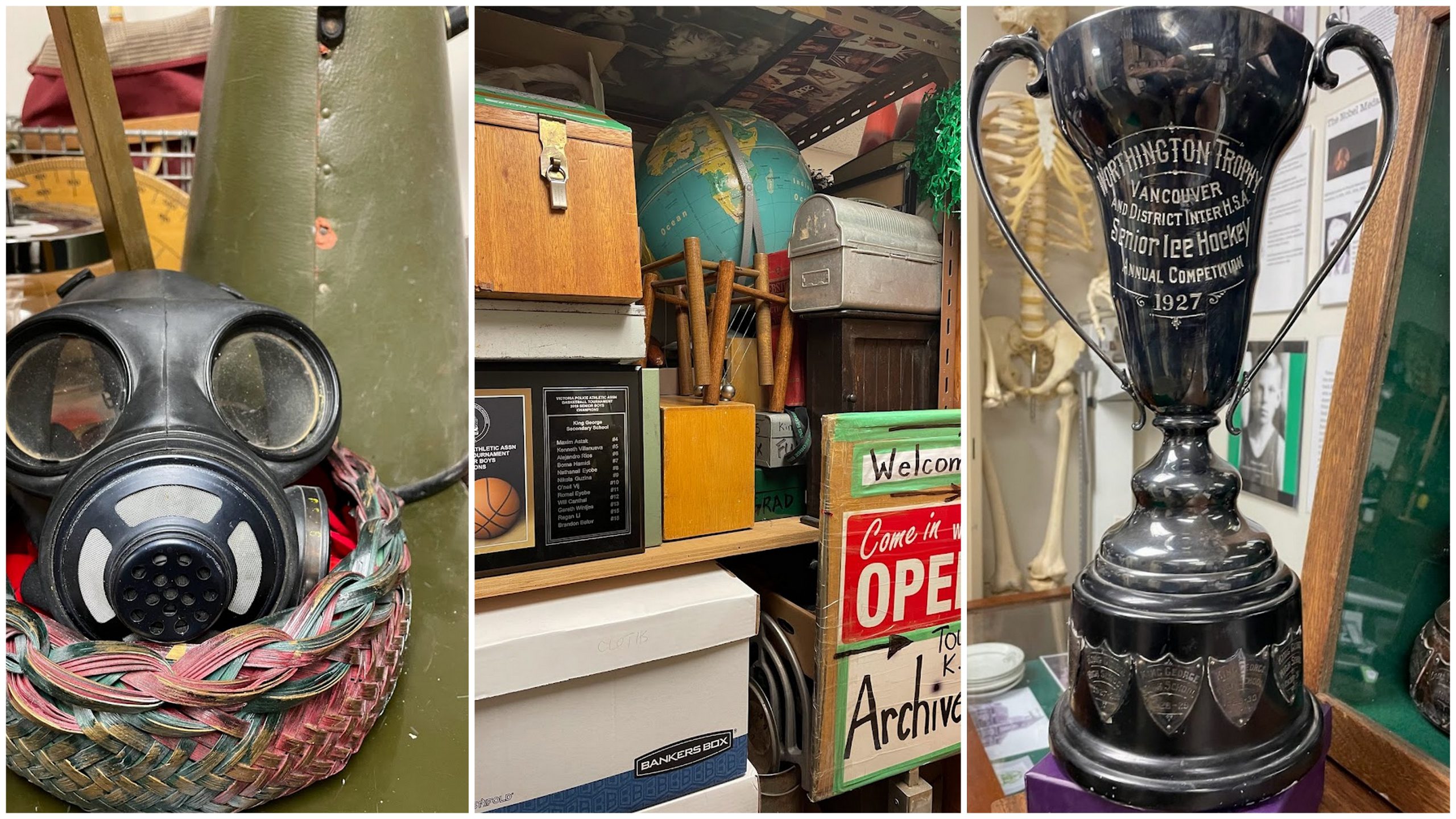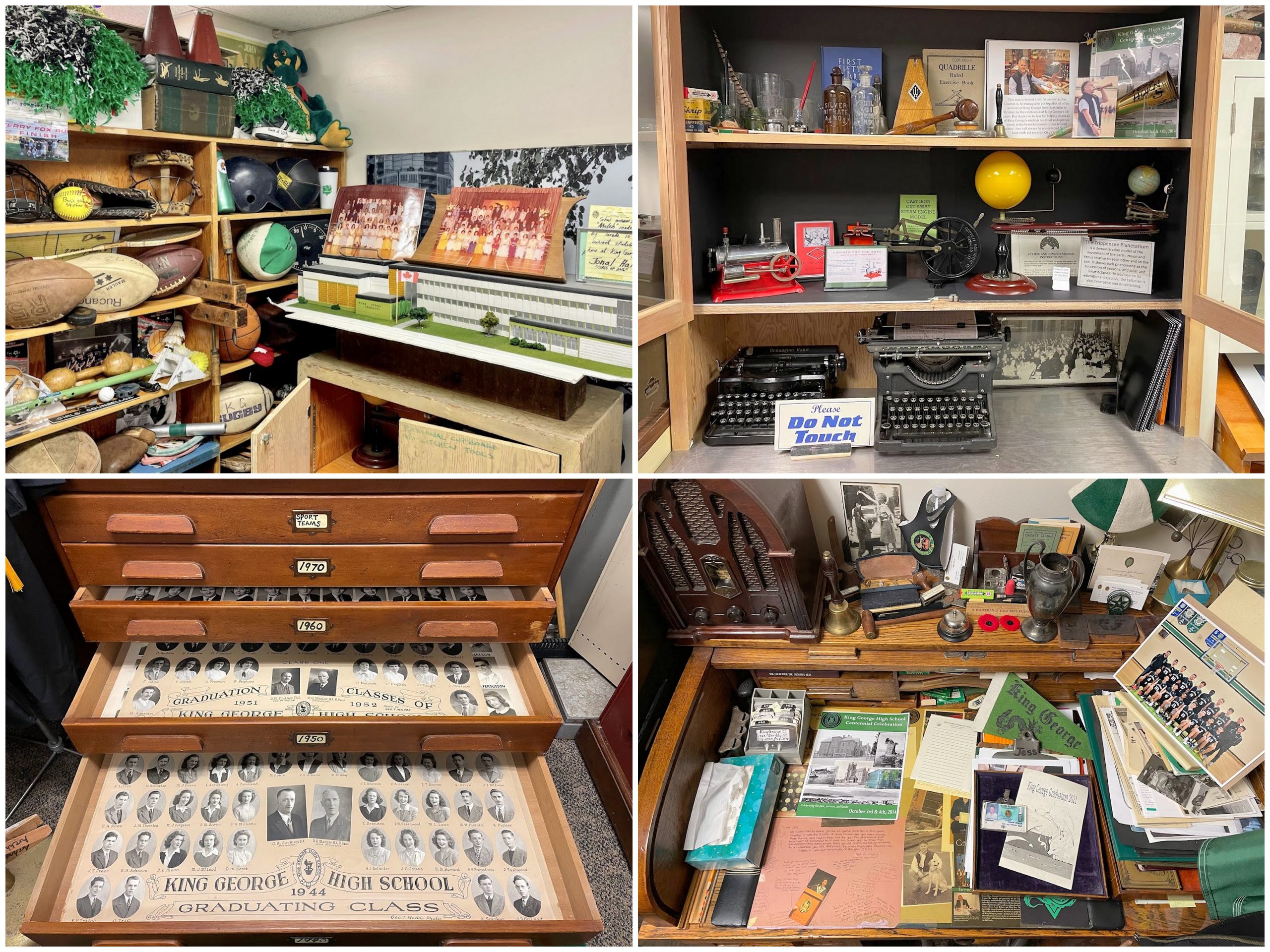The King George Secondary School Archives – a Model for Other Schools
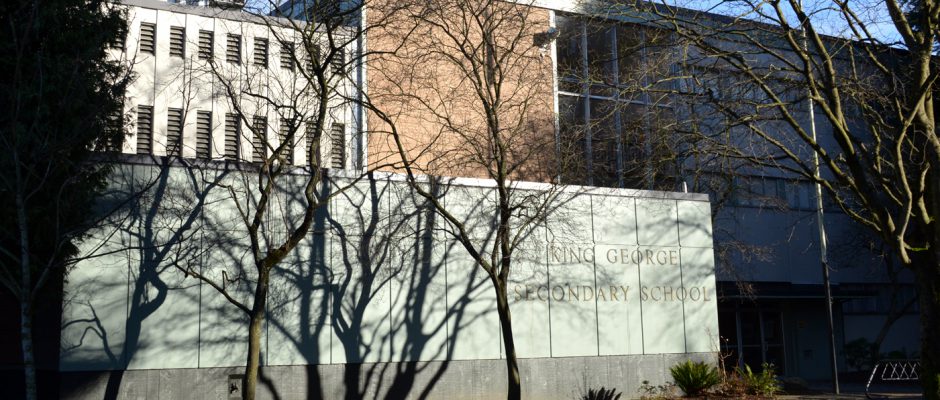
The Genesis of the King George Secondary School Archives
As reported by Jesse Coomes & Jim Bradbury
Photos by Derek Grant
When King George Secondary School was about to turn 100 we started looking for memorabilia to celebrate this event.
This meant digging out boxes of stuff from storage rooms, basements, old closets and asking people if and what they had representing the history of our school.
As we picked through the memorabilia, which came to us in various forms, we realized there had to be a better way of storing the items and making them accessible to current and future students, teachers and alumni to enable them to further engage with and take pride in their school and its history.
First, we had to deal with our prized treasure. This was a collection of composite graduating class and sports team photographs dating back to 1916, which had been rescued from destruction by Greg Wasko, a grad of King George. These composites, which once hung on the walls of the old school building, measured about 3 feet by 4 feet. Greg did a lot of restoration on these composites at his own expense and donated them to us in 2014. With these amazing composites (classes and teams) along with the other memorabilia donated and saved … our archive was born.
These composite “boards” are the only photos of students from the early years of K.G., as there were no yearbooks created in those years. As these boards were brittle with age, we knew they would never be displayed again except for special occasions so we started a program of photographing the individual student photos and creating yearbooks for easy viewing. Then we made a large file folder out of cardboard for storage and protection from further damage.
Next, we were faced with boxes of papers, photos and assorted memorabilia. We decided in order to make these items available for viewing we would sort them out by year and put them in their own ring binder.
The next question was what to put into these binders and how do we make them available for viewing and research, at the same time protect them from further deterioration.
Each binder began with a teacher list of a particular year, a graduating class list and the graduating program. Then we followed up with copies of any newsletters the students created, programs for plays or events the students put on, student cards, crests, anything relating to the students and events of that year.
When storing the various items in the ring binders we avoided using a hole punch and scotch tape to prevent further damage. We put everything into their own archival safe and acid free clear sheet protectors. Small items were mounted on sheets of paper using photo corners and if a paper item was printed on paper too large for the ring binder we would copy it, safely store the original and fold the copy so it would fit.
A debt of gratitude is owed to our office staff over the years and to grad Ivor Parry who saved clippings, photos and various K.G. items. They went to the trouble of putting these items into scrapbooks for which we are eternally grateful. The scrapbooks unfortunately were not archival safe which could have and in some cases did damage their contents; therefore we transferred the contents into our ring binders thankful that the memorabilia had been saved.
This process remains a work in progress as an all- important component of the archives is the inheriting of relevant memorabilia or failing that, saving important items from the present and /or re past while exercising every attempt to store, preserve and ultimate display key items. Recognizing what some of these key items might be will likely require some research and knowledge of history, of the school and our society. Virtually every piece of memorabilia has a story.

